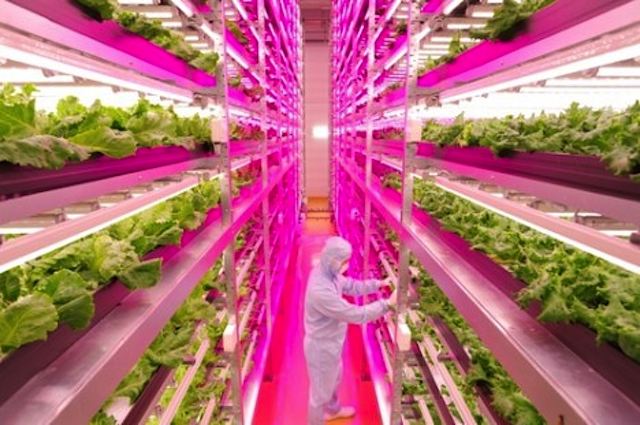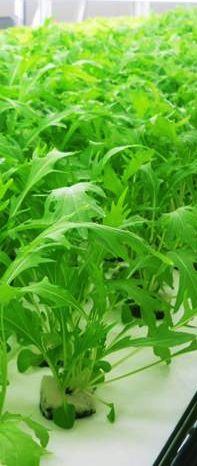
Although his vision for indoor food cultivation dates back many decades, a Japanese botanist, Shigeharu Shimamura, used the earthquake and tsunami disaster of 2011 as a catalyst to start a stunning new factory farm that produces 10,000 heads of high quality leafy lettuce per day with staggering efficiency.
The nuclear disaster at the Fukushima plant occurred in an agricultural region of the small country and produced rampant food shortages. The Japanese government wanted to provide subsidies to spur development in Miyagi — a perfect opportunity to produce the farm of the future.
The facility run by Mirai uses towering rows of thin soil trays and exact measurements for temperature, humidity, light and darkness, to create 100 times more vegetables per square foot than traditional agriculture methods. The bacteria-free, pesticide-free environment cuts food waste by 30-40 percent compared to lettuce grown outdoors.
With such exacting standards crops are not the only thing  being saved. Energy and, most importantly, water is being conserved, too. The growing method uses 40% less power and, through recycling in the closed system, 99% less water than outdoor fields. Other advantages include food safety and year-round availability, no matter the climate or weather.
being saved. Energy and, most importantly, water is being conserved, too. The growing method uses 40% less power and, through recycling in the closed system, 99% less water than outdoor fields. Other advantages include food safety and year-round availability, no matter the climate or weather.
Mirai has installed plant factories in 12 locations around Japan selling their varieties of lettuce to grocery stores and restaurants. They are now expanding into major cities where acreage is limited, like Hong Kong and in mainland China. A Russian location is also being planned following the success of two smaller farms in Mongolia where the climate is so severe vegetables can’t be grown outdoors for much of the year and they need to import from Europe, a great distance away.
As the world learns to deal with shortages of both water and food around the world, plant factory operations are becoming a great solution.
(WATCH the video below or READ a report presented at The University of Arizona)



















